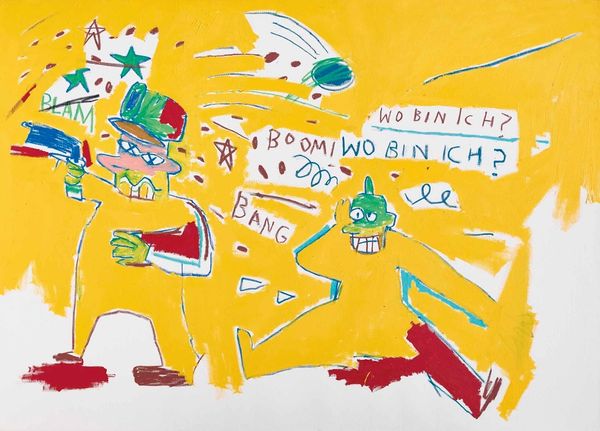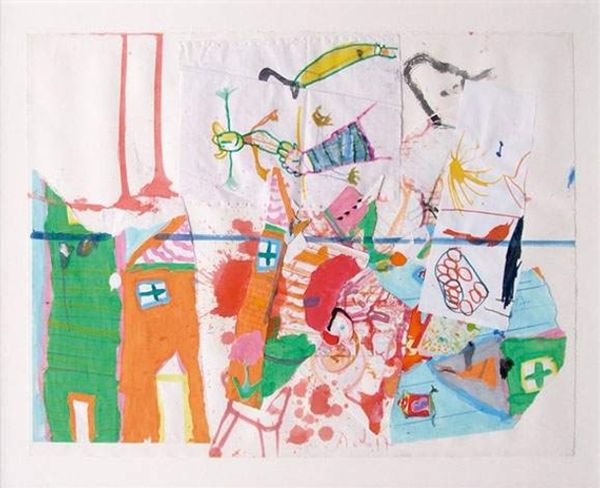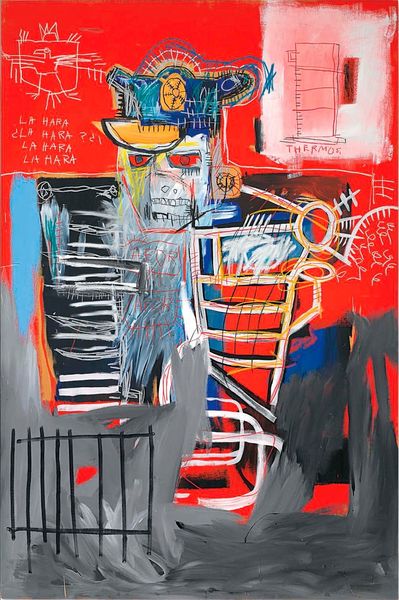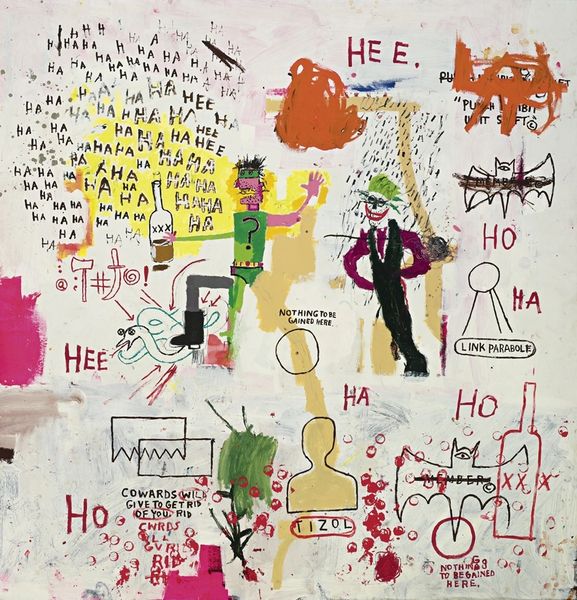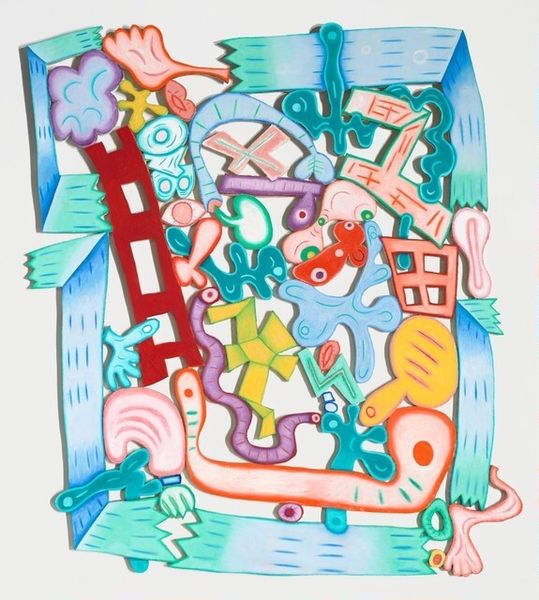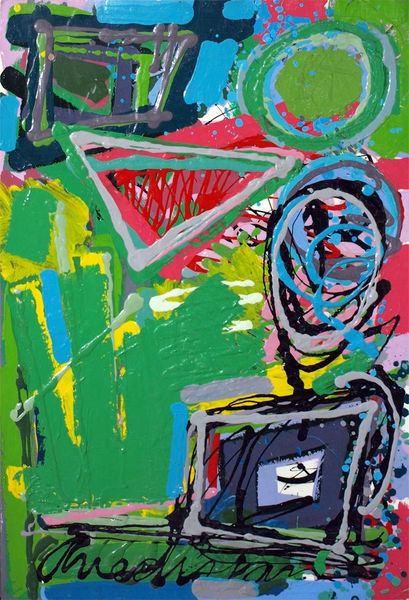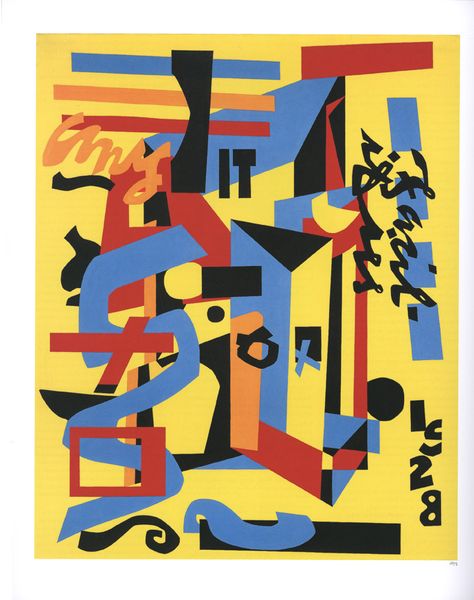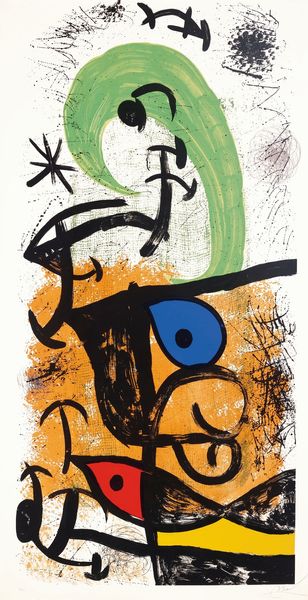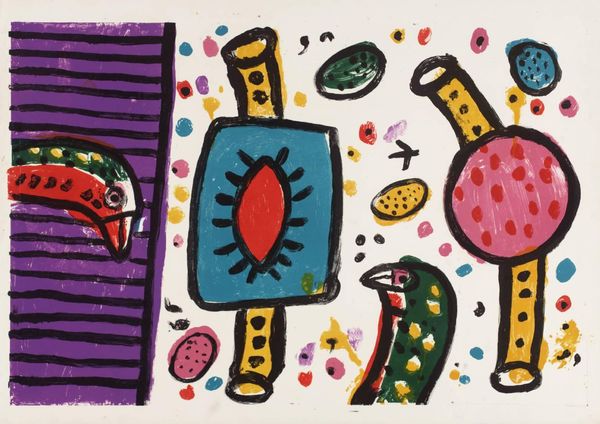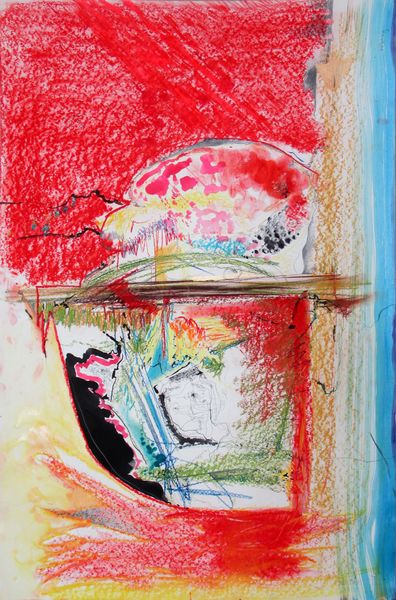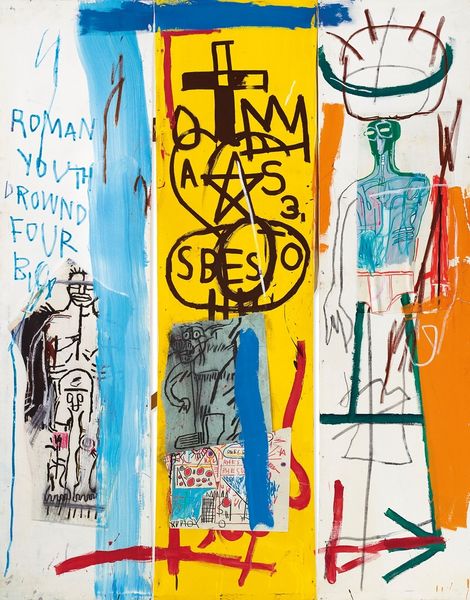
Copyright: Modern Artists: Artvee
Curator: Welcome. We're looking at Jean-Michel Basquiat's mixed-media painting "Reok," created between 1985 and 1986. Editor: The first thing that strikes me is how visceral it feels. It’s not just the raw energy, but also the density of layering – it's really tactile. Curator: Indeed. Basquiat's work is inherently engaged with his socio-political context. He consistently questions notions of power and societal structures through his imagery and language. Editor: I am drawn to the textures and varied material use, like layering paints, using bold lines and symbols across the piece. The rough application seems central to the message here. Curator: He appropriates symbols from various cultures, referencing African art, classical mythology, and contemporary street culture, as seen through his recognizable motifs of crowns and text fragments, a prevalent theme within neo-expressionism. It's about challenging the established art world norms. Editor: Right, and consider his material choices. They directly challenge elitist art ideals through found materials that make art accessible, drawing attention to what is usually excluded or ignored. The process speaks of repurposing, reclamation, and giving voice. Curator: Absolutely. The very act of integrating street art techniques into a fine art context was revolutionary, impacting not only how art was created, but also how it was displayed and consumed. His influence shifted what kind of art the institutions chose to value. Editor: For me, the energy speaks volumes about process. By revealing so much of the materials he used to make it, "Reok" demands the viewer recognizes the sheer labor and material costs involved in constructing this visual world, effectively bringing awareness to making. Curator: Basquiat's art acts as a mirror, reflecting and dissecting cultural assumptions and inequalities. Editor: Ultimately, this painting emphasizes art as an active agent of social change and a testament to cultural transformation in 80's New York.
Comments
No comments
Be the first to comment and join the conversation on the ultimate creative platform.
